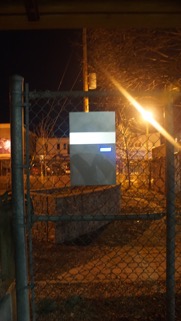The idea of the city as a form of technology is the foundation of a series of urban interventions currently at work in and around Elgin Street, in downtown Ottawa. A final project for students in the course “Thinking Machines: Public space as a vehicle for challenging production and process in art making with technology”, in the Department of Visual Arts at the University of Ottawa, the works “explore knowledge and process in the production of art with technological tools” within the context of public space, and “the world outside the gallery”.
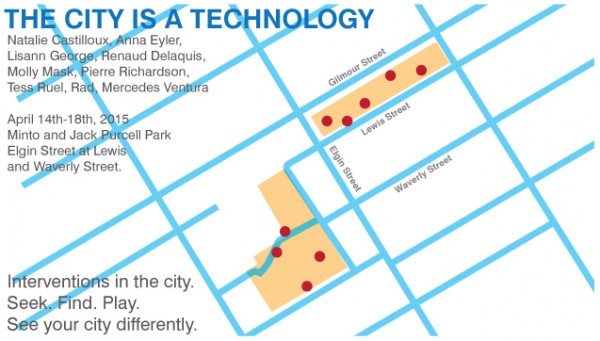
Minimal in their presence, and subtle in their application, the installations question technology, art, and public space through various means.These include, “a shadow play attachment for street lights” (Tess Ruel), a “useless industrial looking box that references ubiquitous utility boxes of all kinds” (Anna Eyler), a “gridded sculpture developed through anonymous communication online and installed in the park daily” (Rad), and “a simple metal tube curved and installed at a picnic table, [where] when two cell phones call each other… an eerie and melancholic instrument is created”.
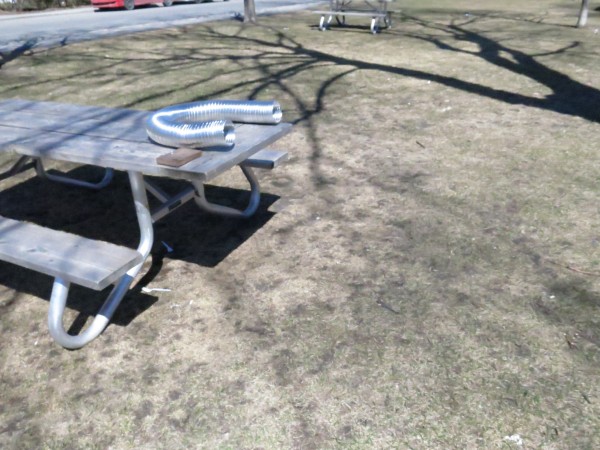
The course, which is taught by Carleton doctoral student Ryan Stec, is meant to encourage students to think about the technology of the city in a playful and artistic way – leading to the development of non-destructive, urban interruptions or additions, as a way of appropriating the landscape of the technological city. The project also challenges the notion of the ‘perfect’ conditions of the ‘white cube’ of the tradition gallery, allowing students to see the outdoor context of the majority of our public space as an opportunity for new and layered meaning.
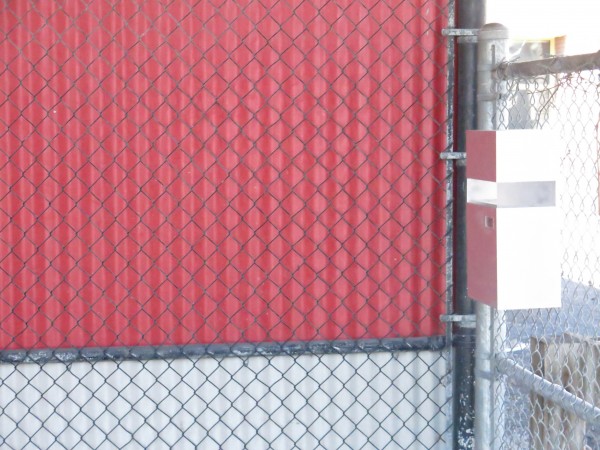
The works will be present until April 18, 2015, located in Jack Purcell and Minto Parks. For more information, visit The City is a Technology blog. A list of the works, locations, and artist descriptions below:
***
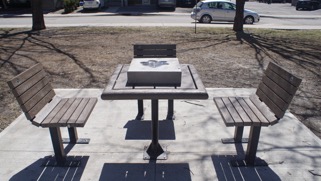
Natalie Castilloux: Protect the Heart
Location: Minto Park
We are able to view this motor through the germ shaped window. The motor is protected in the box, but it is not protected from the world. It is what makes the piece, but it will eventually stop and die. Seems familiar perhaps?
Anna Eyler: The Last Fortress of Metaphysics
Location: Jack Purcell Park
Drawing attention to the ubiquity of electronic indicators within the urban environment. The work displays the GPS coordinates of the exhibition site on an embedded LCD screen, suggesting that the ways we define space geographically—and the ways that we experience it psychologically—are often at odds.
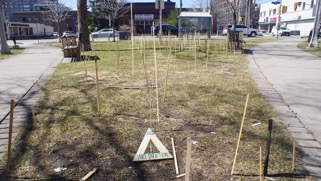
Lissann George: Shanglaria
The Shanglaria is a space creature that is tame to be your companion. It’s perfect for lounging on the couch and walks with the elderly.
Mercedes Inksater: Trash Can Illumination
Trash Can Illumination explores the use of light with structures that are often overlooked or forgotten. The artwork will literally and figuratively bring to light our use of these trash cans and hopefully add to the discussion of our city’s production and displacement of waste.
Location: Minto Park
This interactive piece amplifies the sounds of the city through a pointless phone call. The city is talking to itself and we can only watch and dance.

Pierre Richardson: Call and Response
Location: Jack Purcell Dog Park (or anywhere)
An attempt to see if people will interact with something that is very mysterious, just a phone number in public. The calls will be recorded and looped over and over on top of itself, giving the caller its own performance, unique to them, but with people being able to listen in on the loop and the callers, spies in the arts building. Will the city speak to us? A phone number connected to a loop pedal that will accumulate and layer lengths of telephone calls for whoever calls.
Tess Ruel: An elegy for the city night
Location: Jack Purcell Park
Drawing on the history of magic lanterns and early moving images this work intervenes into the overflow of light in the city to suggest a return to shadows in the night.
Rad: Art Directions
Location: Minto Park
Art Directions is a piece that is objectively using one of the most revolutionary inventions that has hit humanity. The INTERNET. A web portal has been made to allow anyone to use the internet to give a sequence of cardinal directions, these directions will then be mapped in physical space by the artist.
